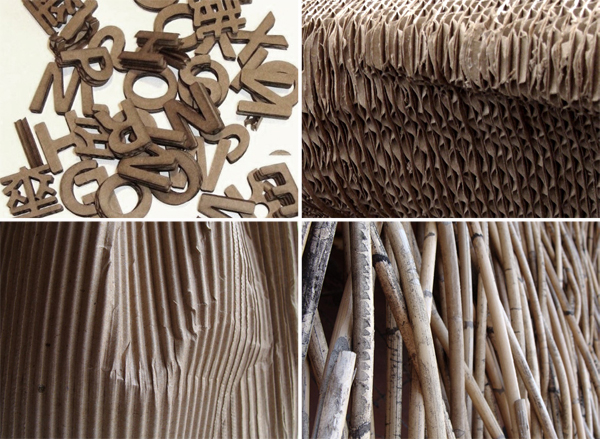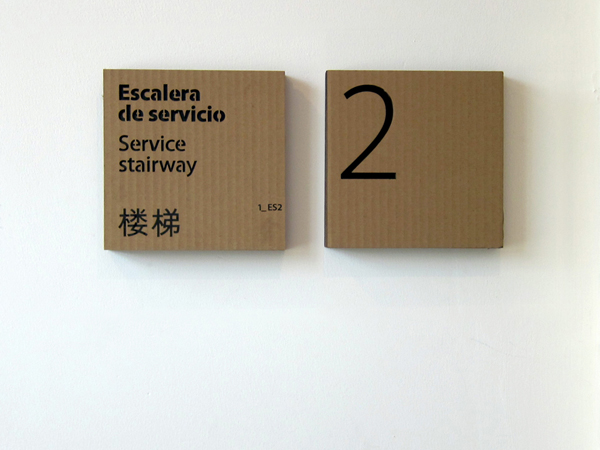Cardboard is a very versatile and green friendly material, and is the centre of Isidro Ferrer’s signage proposal for the Spanish pavilion at the 2010 Shanghai Expo; a project that symbolises the way in which a poor material can reach very rich levels of expressiveness.
This material integrates with ease into the existing wood and wicker of the structure and equipment of the pavilion, a project that has been developed by the Miralles-Tagliabue studio, and has come to be known as the Spanish Basket, given the way it evokes Spanish and Chinese craft tradition. The very nature of cardboard allows for a smooth and harmonic transition from a world of information and guidance to another of communication and expressiveness.
According to the creators of this project, “signage must not only guide but also promote the nature of a building in order to express its content, function and philosophy, as well as identifying and differentiating the object. It is of prime importance for the building to take part in the context of its surroundings, to flee from the idea of an artificial object that only focuses on meeting technical standards.”
Created by Isidro Ferrer in collaboration with Valencian designer Pablo Alabau and the Zaragoza Versus studio, this signage project takes advantage of the inherent characteristics of cardboard: economical, resistant and functional. The temporary nature of the exhibition allows this perishable material to be the most appropriate and efficient for a signage project where sustainability is a priority with respect to squandering habits.
Letters and signs in Spanish, English and Chinese, are volumetrically stamped to become identifying items that provide graphic communication with an independent three dimensional character in perfect harmony with the surrounding architectural space.


